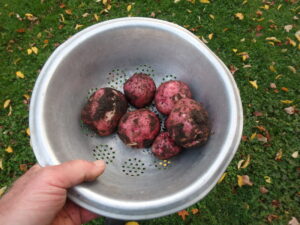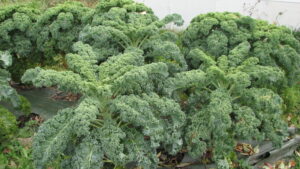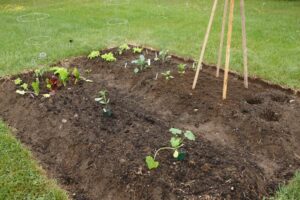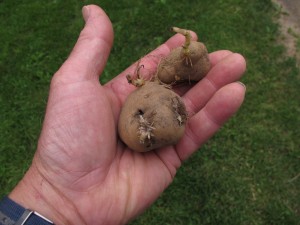Get Ready to Grow Vegetables This Summer
- All vegetables do best in full sun. The minimum amount of sun is 6 hours, though you can grow herbs and greens in 4 hours.
- Good soil is very important. Yes, heavy clay or sandy soil will produce some veggies, but improving it with compost will improve your results. Buy some, work it in.
- You shouldn’t use any chemicals. Not insecticides, not herbicides, not chemical fertilizers. The fertilizers can be replaced with compost and organic bagged fertilizers that are made with all natural ingredients and minerals. Your plants will do fine without chemicals, and will be healthier for you to eat.
- Adequate moisture is also key. Newly planted seeds or seedlings cannot dry out completely and survive. Later on, when mature tomatoes or beans have roots deep in your soil, they can endure a period of drought. But if they start to wilt, they are in trouble and need a soaking. Visit your garden every day to see how your plants are doing. Buy a hose long enough to reach the garden.
- Weeds are not your friends. They compete for water and soil nutrients, and if big enough, sunshine. For most small gardens, you can keep weeds under control in 10 minutes of weeding – if you do so every day. Mulching will help with both moisture levels and weed control.
What should you grow? If you’re worried about having enough food, grow potatoes. So long as you don’t have a swarm of potato beetles eating the leaves, or a blight (like the one that did in the Irish) potatoes are sure winners. They will provide calories better than anything else you can grow, and they store well. I’m still eating mine from 2019.
Next on my list of veggies to grow is kale. It produces a lot of greenery that can be added to any soup, stew or stir fry, adding vitamins A to Z. (Yes, I know, there is no vitamin Z). Unlike lettuce or spinach, kale freezes well. You can pack a lot of kale into a quart zipper bag and put it away for days you can’t to go the store. It’s great in a smoothie, too. I’ve never had a pest or disease on my kale.
Then there are the winter squash: Blue Hubbard and Waltham butternut will store well for many months – all winter, and into the next season. They can be stored on a shelf in the pantry, or cooked and frozen. Either way, they are nutritious, tasty, and very easy to grow. But they have long vines, and need space. Zucchini for summer eating are great, very productive, and take less space than winter squash.
So how do you actually prepare a garden for planting? Pick a spot in the middle of the lawn. Get rid of the grass in the plot: Use a shovel or a garden fork to dig it out. Shake the roots to save the soil from the roots. This is hard work. Plan on spending half an hour every day digging out sod until the job is done.
How to Make a Halloween Stew Using Veggies Fresh from the Garden
Here it is, late October and I’m still harvesting food from my garden. All of it could have been picked earlier, but I love letting vegetables stay in the garden as long as possible, and eating them the day they were picked. And I enjoy making a dish that uses as many of my own ingredients as possible.
For my Halloween stew I used potatoes, leeks, carrots, kale, parsley and thyme directly from my garden, and have others including Brussels sprouts, arugula, celeriac and non-heading broccoli. You could get any of these you need from your local food Coop, which will have them from local farmers. In my opinion, local food is better by far than food trucked across the country.
This stew is really just a variation on my old favorite, leek and potato soup. To make a Halloween stew I think you need something bright orange – reminiscent of Jack-o-lanterns. I made it first with winter squash that I steamed in big pieces and then scooped out in balls with a melon baller, but I didn’t find that the flavor worked with the other ingredients. So I next tried it with carrots, which tasted much better. If you have little kids, the carrots can be made into round balls by steaming them and using a melon baller; otherwise chunks are fine.
Cut 4 strips of thick lean bacon lengthwise, and then into pieces half to three quarters of an inch long. Cook them on low heat in a heavy iron pot. Prepare 2 cups of chopped leeks by cutting them lengthwise into quarters, and then chopping into half-inch pieces. Brown in the frying bacon. Have at ready 4 cups of potatoes chopped into half-inch cubes, and add to the leeks. Brown for a few minutes, then add a quart of water. Bring to a boil, then reduce the heat to a simmer.
Next add 1 or 2 cups of carrots – either as chunks or balls, as mentioned above. Kale is optional in this stew. It adds a nice green color, and I like the flavor, but not everyone does. If you add kale, you will need to add extra water. Toss in a sprig of fresh thyme and a quarter cup of chopped fresh parsley. I like the flat-leafed kind best, though I grow curly parsley, too.
Simmer the stew for 20 minutes or until the potatoes are soft and ready to eat. Add a cup of milk and a dash of nutmeg at the end, but don’t let the stew boil after the milk has been added.
To make this recipe I picked all the vegetable the day I made it – October 19. Carrots are frost hardy and mine had already been through a hard frost. In fact, you can leave your carrots in the ground through the winter, digging them as needed. I’ve done this and know they get even sweeter after getting very cold –some of the carbohydrates in root crops like carrots and potatoes turn to sugars below 50 degrees F.
To leave carrots in the ground for winter eating, put a stake at each end of the bed: otherwise you might not find them easily if you get a lot of snow. I cover the bed with a few inches of whole fall leaves, and then a layer of mulch hay or straw. That will keep the soil from freezing solid.
There are two problems with storing your carrots this way, however: some carrots need to be picked before they get too big or they will split. But if yours are still in the ground, you should know already whether that is a problem. I grew some great purple carrots this year, but the bigger ones split, so I dug them all. A split carrot will rot if left in the ground too long.
The other problem? Rodents. Mice, voles, chipmunks, field rats and some squirrels might gnaw on your carrots if left in the ground. That’s why I like having a spare fridge in the cellar to store vegetables for the winter.
I try to grow between 25 and 50 pounds of potatoes each year. My plants produce between 1 and 3 pounds of potatoes each, so I generally plant 25 to 35 plants. This feeds me, allows me to give some away most years, and provides me with organic seed potatoes to start next year’s crop. I once went 20 years without buying a potato, though I only had them to eat for 9 or 10 months each year. I don’t mind eating seasonally, in fact I think it makes me appreciate my food even more.
I’ve tried several different techniques for storing my potatoes. I’ve stored them in a cement-block bin (with a plywood lid) in a cold basement. Last year I put them in an antique 25 gallon crock with a plywood lid. Often I’ve stored them in a spare refrigerator. The trick is to maintain high humidity and a temperature between 33 and 50 degrees F. Putting an inch of wet sand in the bottom of a storage bucket works great for that, though you will have to re-moisten the sand after a while.
This year I did 2 plantings of potatoes: the main planting was in early June, the second in early August. For that second planting I had found some sprouted potatoes in the storage crock I had used, and decided to see what would happen if I planted them in August. Not all of the potatoes sprouted – they had been lurking in a dark basement for months – but those that grew did fine. They had about 10 weeks of growing time and were full sized and healthy. No bugs, either.
Growing my own food isn’t just about saving money, though I like that. Really it’s about the satisfaction of eating food that’s fresh, that tastes great and that has never been sprayed with chemicals.
Read Henry’s twice-a-week blog posts at https://dailyuv.com/
Growing with Kids
By all rights, I never should have turned out to be a gardener. I tell parents that if they want their children to be gardeners when they grow up, that they should never make them pull weeds. My parents made me pull weeds. We had a vegetable garden and we all worked in it. Gardening was considered a duty, not a learning experience. They had lived through the Depression of the 1930’s and had a deep fear that the economy would collapse once again. Growing vegetables was a hedge against hunger. My grandfather saved the day by making gardening fun when I visited him.
If you want to encourage children to love gardening, I’d like to suggest that you give each child a piece of earth that is theirs to use as they see fit – to grow carrots or flowers, or even to use with toy trucks. The right size plot is probably, for smaller children, as big as they are – their height by their arm span. For little ones, that’s three or four feet square. It could be a wood-sided bed, or just a corner of the garden marked off by string.
Help your kids pick things to grow that are easy and tasty. I think most kids will eat cherry tomatoes right off the bush. Sun Gold is the name of my favorite – it’s delicious and highly productive. Buy a seedling and help your child plant it. These tomato plants get big and tall and will need some support. I recommend using a tomato cage made of heavy wire. Pick the biggest cage you can – 54 inches tall and with 4 legs, not 3. Later, you may have to add a tall wooden stake to help keep the plant from tipping over anyway, cage and all.
There really is magic in starting plants from seeds. Kids are fascinated by the idea of planting a seemingly inert speck and getting fresh tomatoes or carrots some months later. But they need guidance, and a certain amount of help. Carrots seeds, for example, are tiny and hard for small fingers to plant one by one. The solution? Buy pelleted seeds if you can find them. These are seeds that are coated with a layer of clay, turning a tiny seed into something almost the size of a BB. I had pelleted seeds for my grandkids to use this year, and it made a frustrating job fun. I ordered pelleted carrot seeds from Johnny’s Selected Seeds (877-564-6697 or www.johnnyseeds.com).
Radishes, beets and beans are bigger seeds and easy to handle, but not necessarily tops on the list of favorite veggies for kids. I love green beans now, but as a kid I only ate them under duress. Corn is easy to plant, but requires more space than you might want to dedicate to it, and is a magnet for corn worms which can be off-putting.
If you are working with kids, you surely do not want to use any chemicals in their little gardens. Not chemical fertilizer, not weed killer, not bug killer. Their systems are much more sensitive to chemicals than ours. Chemical fertilizers are not poisonous, but can be harsh on young fingers and the dust should never be inhaled.
In my experience, nothing is better to plant with kids than potatoes. They are easy to handle at planting time, and the excitement when harvesting is remarkable. And I’ve never met a kid that didn’t like eating freshly cooked mashed potatoes that they grew.
 If you’ve never grown potatoes before, they’re easy. Start potatoes from sprouted potatoes that are sold as seed potatoes at your local feed-n-grain store or garden center. Don’t try growing potatoes from grocery store spuds because many of those have been treated with chemicals to keep them from sprouting. You can plant whole small potatoes, or cut larger ones into 2 or 3 pieces, so long as each has two “eyes” that are starting to sprout.
If you’ve never grown potatoes before, they’re easy. Start potatoes from sprouted potatoes that are sold as seed potatoes at your local feed-n-grain store or garden center. Don’t try growing potatoes from grocery store spuds because many of those have been treated with chemicals to keep them from sprouting. You can plant whole small potatoes, or cut larger ones into 2 or 3 pieces, so long as each has two “eyes” that are starting to sprout.
For best results, each piece of potato needs to be placed in loose, rich soil that has been amended with some compost.. The roots of your plants will grow down, and the new potatoes will be formed above the seed potato. Loosen the soil well and place your seed potatoes 3 or 4 inches beneath the soil surface and a foot apart in the row. Cover with a thin layer of soil – an inch is fine. Then, after the spuds have sent up leaves, you can fill in the hold or the trench you have planted in. That’s called “hilling” the potatoes.
Potatoes are remarkably productive. Each piece you plant will produce from one to five pounds of potatoes. And they come in a variety of colors – which kids find fascinating: get some purple ones or red-skinned ones to plant if you can. The variety called Kennebec is an all white potato that is, in my experience, the most productive of all. Yukon Gold is another good producer, as is Red Pontiac, one of my favorites for flavor.
Maybe I became a gardener because, like my parents, I feared that calamity would strike and I’d need to depend on my garden for food. It is true that I eat something that came from my garden nearly every day of the year – garlic, for example, or veggies from my freezer. And I don’t mind weeding – I even enjoy it in moderation. So try to get your kids gardening. It’s not too late to start, and I think you’ll all have fun.
Henry Homeyer is a grampy and former school teacher. His children’s book, Wobar and the Quest for the Magic Calumet, is a fantasy-adventure for all elementary school kids. His web site for that book is www.henryhomeyer.com.








